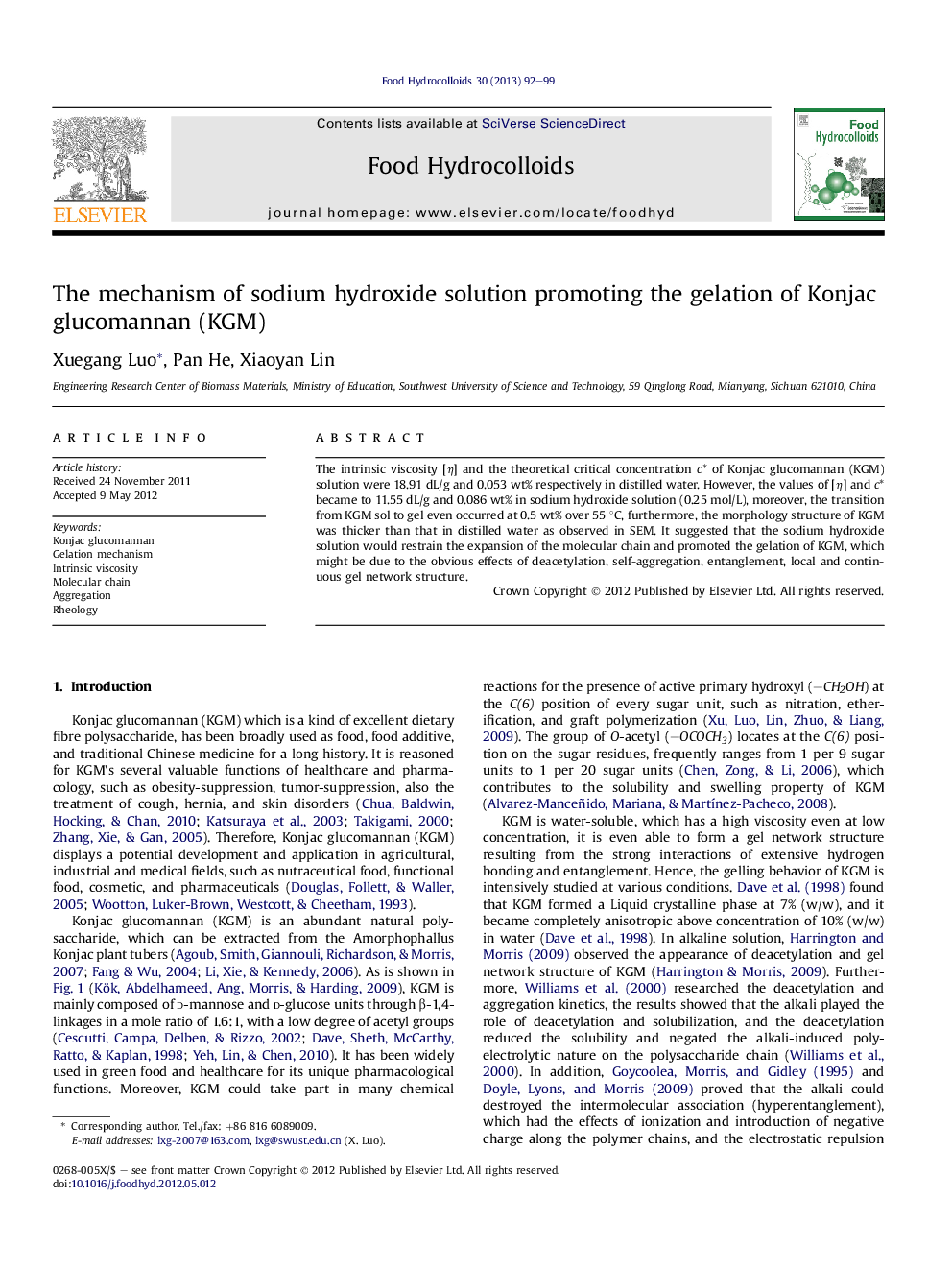| Article ID | Journal | Published Year | Pages | File Type |
|---|---|---|---|---|
| 604729 | Food Hydrocolloids | 2013 | 8 Pages |
The intrinsic viscosity [η] and the theoretical critical concentration c* of Konjac glucomannan (KGM) solution were 18.91 dL/g and 0.053 wt% respectively in distilled water. However, the values of [η] and c* became to 11.55 dL/g and 0.086 wt% in sodium hydroxide solution (0.25 mol/L), moreover, the transition from KGM sol to gel even occurred at 0.5 wt% over 55 °C, furthermore, the morphology structure of KGM was thicker than that in distilled water as observed in SEM. It suggested that the sodium hydroxide solution would restrain the expansion of the molecular chain and promoted the gelation of KGM, which might be due to the obvious effects of deacetylation, self-aggregation, entanglement, local and continuous gel network structure.
Graphical abstractThe different status of the molecular chain in distilled water and in 0.25 mol/L sodium hydroxide solution is shown in the schematic diagram, and the effects of deacetylation, electrostatic repulsion, and destruction of hydrogen bonding are obvious in the presence of alkali.Figure optionsDownload full-size imageDownload as PowerPoint slideHighlights► The intrinsic viscosity was measured in neutral and alkaline solution. ► The theoretical critical concentration was calculated. ► The scannings of temperature, strain, and frequency were provided by rheology. ► The sol–gel transition and mechanism were discussed in rheology and SEM.
